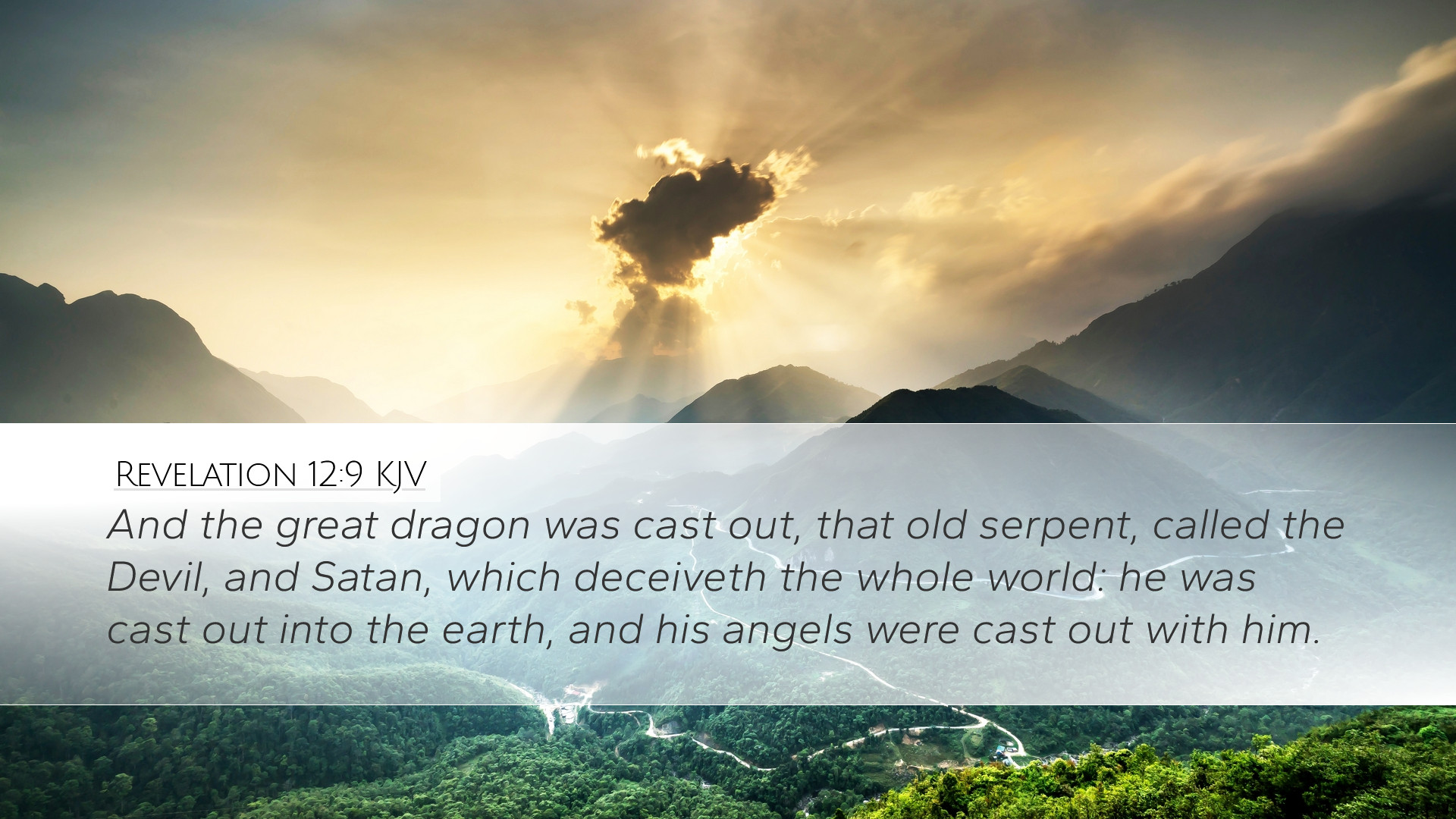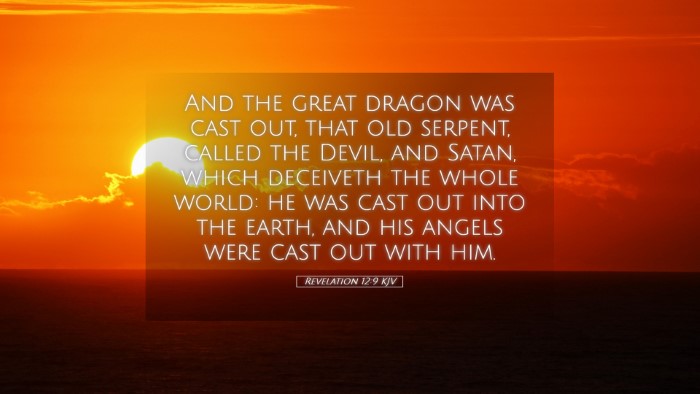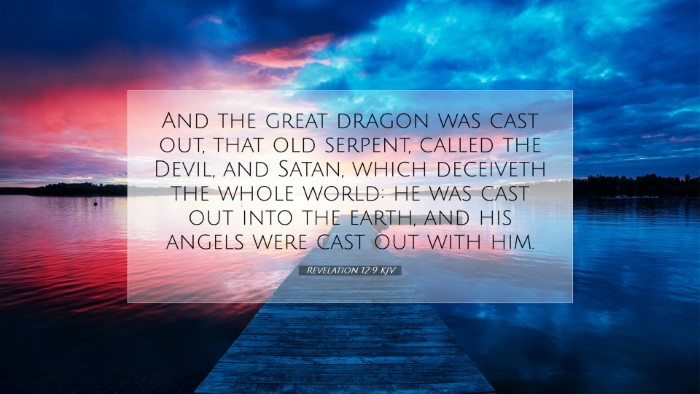Revelation 12:9 (KJV): "And the great dragon was cast out, that old serpent, called the Devil, and Satan, which deceiveth the whole world: he was cast out into the earth, and his angels were cast out with him."
Summary and Commentary on Revelation 12:9
Contextual Overview
This verse occurs within a passage that depicts a climactic cosmic battle between good and evil. The imagery of the dragon serves as a representation of the ultimate antagonist against God’s purposes. The narrative begins in Revelation 12 with a sign in heaven, emphasizing the spiritual warfare underlying the events of human history.
The Identity of the Dragon
Matthew Henry elucidates the nature of the dragon as not merely a creature of folklore but as a real presence in spiritual warfare, representing the devil who is opposed to Christ and His church. This identification lays the groundwork for understanding the nature of evil as it manifests in the world.
Albert Barnes notes that the title of the dragon as “that old serpent” harkens back to Genesis 3:1, signifying a continuity of evil across Scripture. This not only underscores the persistent nature of temptation and sin but also reflects the narrative of redemption that God unfolds through history.
Adam Clarke further emphasizes the significance of the term “great dragon,” illustrating the malignancy and power of evil. The imagery invokes fear, but it is juxtaposed against the power of God’s ultimate victory through Christ.
The Act of Casting Out
The phrase “he was cast out into the earth” signifies a decisive moment in the cosmic struggle. Henry suggests that this casting out refers to the final defeat of Satan, highlighting the idea that while the dragon may have power now, his authority is limited and ultimately subject to the sovereign control of God.
Barnes adds that this event symbolizes not just a future event of futility for Satan, but a present reality for believers who hold fast to the victory of Christ. The devil’s casting out into the earth represents his limitations and the scope of his influence over humanity.
Clarke interprets “his angels were cast out with him” as indicative of a hierarchy of evil that was implicated in his rebellion. This serves as a reminder that evil encompasses not just individual souls but is systemic and widespread in its nature.
The Deception of the Whole World
The assertion that the dragon “deceiveth the whole world” speaks to the pervasive and insidious nature of sin and falsehood. Matthew Henry describes this as the serpent’s most effective weapon—a deception that undercuts truth and leads to destruction. Deception can manifest as subtle lies mingled with truth, causing confusion among believers and non-believers alike.
Adam Clarke points out that understanding the scope of the dragon's deception is crucial for spiritual warfare. He encourages believers to be vigilant against false teachings and ideologies that contradict God's truth, reinforcing the need for discernment through Scripture.
Albert Barnes notes that this comprehensive deception is linked to the nature of Satan as the enemy of mankind, who seeks to lead people away from the truth of the Gospel and into the snares of sin.
Theological Implications
This verse encapsulates crucial theological truths regarding the nature of spiritual warfare. It presents a clear understanding of the conflict between light and darkness, truth and deception. The reality of the devil, his actions, and their implications for the world today serve as a reminder of the active engagement required from the church in addressing evil.
Henry’s reflections invoke the need for believers to remain steadfast, holding fast to their faith and the promises of God. He concludes that while the dragon may roar, the Lamb has triumphed.
Barnes focuses on the believer's assurance of victory through Christ, noting that although Satan's deception is pervasive, God’s truth ultimately prevails. This provides a powerful encouragement to those engaged in spiritual leadership.
Clarke’s insights address the urgency of evangelism and discipleship in light of this pervasive deception, encouraging God’s people to actively spread the message of truth against the fabrications of the enemy.
Application for Believers
In light of Revelation 12:9, believers are called to recognize the existence of spiritual warfare and the continual threat posed by deception. Here are some key applications:
- Vigilance: Believers must remain alert to spiritual dangers and seek to anchor their lives in Scripture.
- Truth in Community: Encourage one another in the truth of God’s word, promoting deep, biblical understanding in church communities.
- Evangelism: Share the light of the Gospel in a world filled with darkness, recognizing the role of the church in combating deception.
- Spiritual Discernment: Develop skills to discern truth from falsehood using prayer and study of God’s word.
Conclusion
Revelation 12:9 serves as a profound reminder of the cosmic battle that undergirds our everyday lives. The dragon, identified as Satan, stands as a formidable force against God’s plans; yet, believers are encouraged to recognize their victory in Christ. As Watson succinctly observes, “The dragon may rage, but the Lamb has conquered.” Through shared insights from historical commentators, we grasp a fuller understanding of this spiritual reality and its implications for our faith and practice as followers of Christ.


